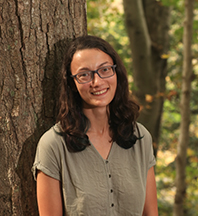Week of May 26, 2024 – June 1, 2024
by Catherine McLaughlin, Environmental Educator
What do you take notice of when you are outside? Do you hear the symphony of nature with frog and bird calls, the mellow humming of insects pollinating, or the wind moving plant life gently in the breeze? Can you smell petrichor, that smell when rain lands on dry soil, or the flowers in bloom?
What do you see? From the trees tops to the under the soil there is more to observe when you take a moment to look. Everything you see holds a role in our ecosystem, providing something for another creature or plant. For example, milkweed is the sole host plant for monarch butterflies. The caterpillars feed exclusively on milkweed leaves, without milkweed monarchs cannot complete their life cycle.
If you take a walk nearly anywhere in Central New York, you will find invasive plants. They take over the roadsides and can be seen along trails at almost any park. Some butterfly species may lay their eggs on invasive garlic mustard instead of the native mustard plants. Unfortunately, when they lay eggs on these invasive plants their eggs do not survive. Dame’s Rocket is another invasive species that grows rapidly and produces thousands of seeds, reducing native food sources for birds and butterflies. For creatures that rely on native plant species to grow, it is important to plant native plants where we can, preserve the habitats where they are established, and remove invasive species that may cause harm to these areas.
Any open and disturbed area can be susceptible to invasive species. It becomes a challenge to remove these invasive plants once established. At Baltimore Woods our stewardship team works to remove and monitor invasive species at our property that could cause harm to our ecosystem by decreasing areas for our native plants to grow that provide habitat and food sources to animals. (You can always volunteer to help and learn about what is happening to help maintain our preserve – check out the upcoming Stewardship WorkDays on our website!!)
Regardless, invasive species hold a role in the ecosystem – Just not where they are now! Garlic mustard and dame’s rocket are from Europe and Asia, and over 60 different insect species use it in their native environment. Whereas here they are not a species that insects and other plant life are used to competing with or consuming, so they can easily spread. Despite the fact that invasive species may be problematic in certain areas, they are important in their native habitats.
Next time you have the chance to observe what is outside, take notice of what may be visiting what. You may find a connection you weren’t expecting to see.


